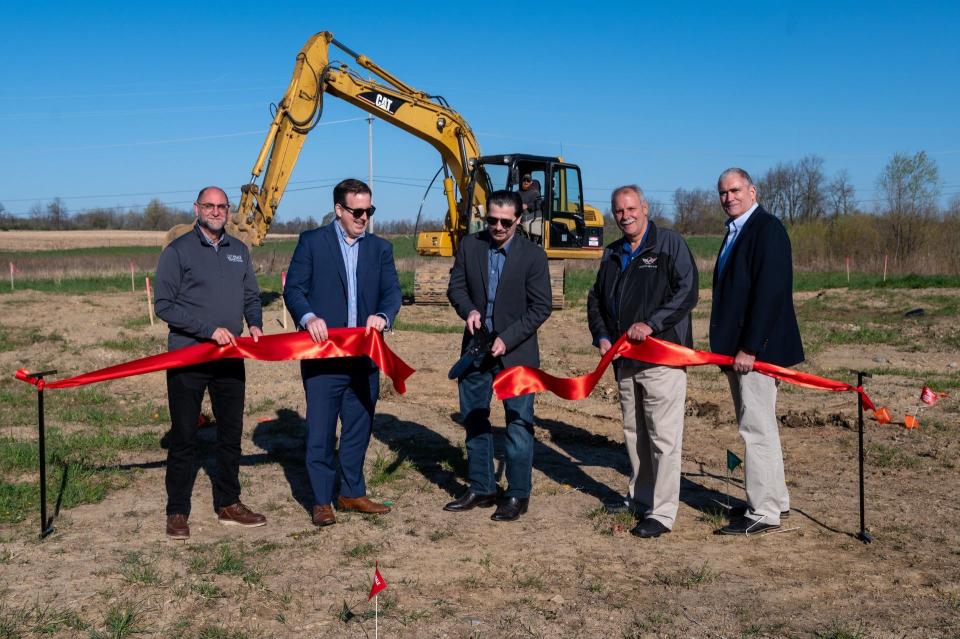Some areas of the High Plains Aquifer are continuing a decades-long trend of depletion that could eventually dry up and economically destroy agricultural communities in the west.
The report, released last week by the Kansas Geological Survey, highlights glimmers of hope in communities that came together to manage the aquifer, the underground water system that supplies western Kansas with its water.
Depletion of the High Plains Aquifer
Kansas, like most states west of the Missouri River, follow a western model of water law that prioritizes the oldest water rights issued. The “first in time, first in right” model gives legal rights to use water based on the understanding of water systems from the early 20th century.
As the country got a better understanding of how water works, managers realized more water is being taken out of aquifers than makes it back in.
“The thought was that there was a finite amount of water that could be used and that, someday, behaviors will have to change. But that was always years off in the future,” said Brownie Wilson, one of the authors of the KGS’s latest report. “Today, we have some places in Kansas where we’ve had to change our behaviors, change how we use water because it’s becoming less available.”
Aquifers recharge when precipitation seeps back into the surface, or when water pumped up for irrigation returns. The severity of the water shortage depends on the location of a well.
Aquifers have higher and lower depths throughout the underground system, which also are affected by environmental factors. Areas with low precipitation, like the semi-arid west side of Kansas, will recharge aquifers slower than the wetter areas as you go east.
“That western third of Kansas, the recharge rates there appear to be pretty small from precipitation, but they’re also fairly consistent,” Wilson said.
Some farmers who are pulling from heavily depleted aquifers are scaling back after reaching the lower-quality water available at the bottom of aquifers.
“There are already areas that have reached that minimum threshold,” said Vijay Ramasamy, water consultant to Gov. Laura Kelly. “Folks have to make very difficult decisions on what they’re going to do.”
Kansas’ role in preserving aquifer
Kansas’s ability to conserve water uses a lot more carrots than it does sticks.
The Conservation Reserve Enhancement Program entices water right holders to permanently retire them and leave the water underground. The Water Right Transition Assistance Program similarly seeks farmers to retire water rights after it is determined to be optimally beneficial to the health of the aquifer.
Other programs are more informal, such as the Water Innovation Systems and Education Program that teaches agricultural producers about technologies and strategies that make irrigation more efficient. The state can even chip in to buy some of the improved irrigation technology through a cost-sharing program
Cooperative efforts show some success in Kansas
One success story from water reforms is the Local Enhanced Management Areas. The first established LEMA is a nearly 100-square-mile region in Sheridan County.
In 2013, it formed a LEMA after prior attempts at conserving groundwater failed, due to the surplus water being used elsewhere. In the first 10 years of the Sheridan County LEMA, it only scaled back the average irrigated area by 2.7%, but reduced the amount of water irrigated by 36%.
“It’s voluntary, it’s collective, and they came together and said, ‘We’re going to meet these specific targets to extend the life of the aquifer,’” Ramasamy said.
The district used technologies, planted less thirsty crops and used new management strategies to achieve the reduction in water usage. Ramasamy said it’s also changed the mindset of farmers in the area to emphasize how they can meet production goals while using less water.
“It’s a culture of conservation,” Ramasamy said.
What to expect in upcoming Kansas legislative session
Rep. Jim Minnix, the Kansas House Water Committee chair, said his committee is in a better spot to work on water than it was last year, when half of the committee members were new to the issue.
“This upcoming year we’ll continue to work and expand on the bills that we had this last year and a few more topics on the quantity of water,” Minnix said.
The committee’s bills in last year’s session mandated Groundwater Management Districts to submit reports to the state to ensure compliance. It increased funding for Kansas Water Resource Department program funding.
It also expanded clarified who can enroll in a multi-year flex account, which allows producers to exceed their maximum water right each year if they reduce the total amount of water pumped throughout a five-year period.
Minnix said he hopes this year the committee can address uranium found in water that flows in from Colorado on the Arkansas River. He singled out a potential cost-sharing program for uranium testing for domestic wells.
“We want to talk a little more in depth about water quality issues besides just the quantity,” Minnix said.
This article originally appeared on Topeka Capital-Journal: Western Kansas water supply still declining and needs action: Report
Signup bonus from




